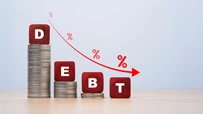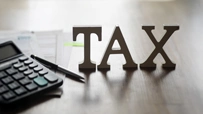Digital Awareness: How to Identify Fake Income Tax Emails
September 02, 2025

You might be sipping your morning coffee, scrolling through your inbox, and suddenly—an email from the Income Tax Department pops up. Subject line? Something intimidating like “Final Notice: PAN Will Be Blocked” or “Your Refund Has Been Withheld”. Your heart skips a beat. The message looks official, there's a clickable link, maybe even a PDF attached.
Stop right there.
This isn’t just another spam email. It could be a phishing attack—designed to steal your personal info, bank credentials, or worse. These scams are getting smarter, more polished, and often strike when you're least expecting them, especially during tax season.
That’s why this blog exists, to help you spot a fake before it fools you.
What Legitimate Income Tax Emails Actually Look Like?
Before you panic (or click anything), it helps to know what real communication from the Income Tax Department (ITD) actually looks like. Once you understand how genuine notices are structured, you’ll be much better equipped to sniff out scams.
Here’s what you should always check:
1. Look for a DIN (Document Identification Number)
Every official communication from the ITD must carry a unique DIN. Think of it like a fingerprint—it confirms the notice is genuine and traceable.
No DIN? No trust. You can safely ignore or report the email.
2. Official Notices Are Uploaded to Your E-Filing Portal
Even if the email looks real, don’t rely on it alone. Always log in to the official Income Tax e-filing portal and check your dashboard. If the notice isn’t there—it’s not from them.
3. Real Emails Come from Official Domains
Legitimate ITD emails will only come from addresses ending in:
Anything else, even one letter off, should raise red flags. Watch out for fake domains like:
Scammers bank on you skimming the address. Don’t give them that chance.
Red Flags in Fake ITD Emails: Spot the Trap Before It Snaps
Scammers know that when you see the words “Income Tax,” panic takes over logic. That’s why phishing emails are often designed to look urgent and intimidating. But don’t fall for the bait.
Here’s how to spot the traps they lay:
1. Tone That Triggers Panic
Fake emails often use threatening or urgent language like:
The Income Tax Department does not use aggressive or fear-inducing language in its emails. If an email sounds like a threat, it’s probably a trap.
2. Formatting Gone Wrong
Official government communication is professionally drafted. Phishing emails, on the other hand, usually have:
If it reads like a rushed message from a stranger—it likely is.
3. Random Links and Attachments
This is where most people get fooled. Fake ITD emails will often have:
If you see a link, hover over it without clicking. If the domain doesn’t match incometax.gov.in exactly—don’t touch it.
How to Verify Whether an ITD Email Is Genuine
If an email claims to be from the Income Tax Department, your first instinct should be: “How can I confirm this is legit?”
Here’s a simple checklist that puts you back in control.
1. Check for the DIN Number
As mentioned earlier, no DIN = no legitimacy. The absence of a Document Identification Number is a dead giveaway that the message is fake.
2. Log in to Your E-Filing Account
Every valid notice is uploaded to your official account on the e-filing portal. If it’s not there, it’s not real. Period.
3. Inspect the Email Address and URL Carefully
4. Never Trust Payment Requests
The IT Department does not ask for direct payments through email, and certainly not through third-party links. They also never ask for bank details, OTPs, or passwords via email.
Best Practices to Stay Secure (Always)
Phishing scams aren’t going away anytime soon—but with a few simple habits, you can make yourself nearly unphishable. Whether you’re a salaried professional, a business owner, or someone helping others with tax filing, these practices will keep you steps ahead of scammers:
1. Never Click Directly—Always Verify First
If an email includes a link, hover over it to preview the URL before clicking. If it doesn’t start with https://www.incometax.gov.in or another verified .gov.in domain—don’t touch it.
2. Login to the Portal, Don’t Rely on Email
Even if the email seems genuine, the only place you should trust completely is your official Income Tax e-filing portal.
Always cross-verify notices there.
3. Never Share Sensitive Info Over Email
The Income Tax Department will never ask you to provide:
Any email requesting these is 100% fake.
4. Update Your Contact Info on the IT Portal
This ensures you receive all legitimate communication directly and reduces confusion caused by misleading emails.
5. Educate Your Team or Family Members
Phishing scams often target the least vigilant person in the group. If you're financially savvy, make sure your staff, spouse, or parents also know what to look out for.
6. Enable Two-Factor Authentication (2FA)
Turn on 2FA for your email accounts and financial apps. Even if your password is compromised, this adds a second line of defence.
What to Do If You Receive a Phishing Email
If something feels off, it probably is. Here’s exactly what to do next:
1. Don’t Panic, Don’t Click, Don’t Reply
2. Mark It as Phishing in Your Email Platform
Every major email provider (Gmail, Outlook, etc.) has an option to mark suspicious messages as phishing or spam.
This helps train filters and keeps others safe.
3. Report the Email to Authorities
Forward the suspicious email to:
Include any details that might help—such as the sender’s email, the full message, and screenshots if possible.
4. Change Your Passwords if You Clicked Anything
If you made the mistake of clicking a link or entering information:
Final Thoughts
The fear of missing a tax notice can make even the most cautious person click without thinking. But remember this, the Income Tax Department doesn’t operate through scare tactics or hidden links. If something feels wrong, pause. Breathe. Verify.
Disclaimer:
The contents herein are only for informational purposes and generic in nature. The content does not amount to an offer, invitation or solicitation of any kind to buy or sell, and are not intended to create any legal rights or obligations. This information is subject to updation, completion, amendment and verification without notice. The contents herein are also subject to other product-specific terms and conditions, as well as any applicable third-party terms and conditions, for which Ujjivan Small Finance Bank assumes no responsibility or liability.
Nothing contained herein is intended to constitute financial, investment, legal, tax, or any other professional advice or opinion. Please obtain professional advice before making investment or any other decisions. Any investment decisions that may be made by the you shall be at your own sole discretion, independent analysis and evaluation of the risks involved. The use of any information set out in this document is entirely at the user’s own risk. Ujjivan Small Finance Bank Limited makes no representation or warranty, express or implied, as to the accuracy and completeness for any information herein. The Bank disclaims any and all liability for any loss or damage (direct, indirect, consequential, or otherwise) incurred by you due to use of or due to investment, product application decisions made by you on the basis of the contents herein. While the information is prepared in good faith from sources deemed reliable (including public sources), the Bank disclaims any liability with respect to accuracy of information or any error or omission or any loss or damage incurred by anyone in reliance on the contents herein, in any manner whatsoever.
To know more about Ujjivan Small Finance Bank Products Visit:"https://www.ujjivansfb.in"
All intellectual property rights, including copyrights, trademarks, and other proprietary rights, pertaining to the content and materials displayed herein, belong
to Ujjivan Small Finance Bank Limited or its licensors. Unauthorised use or misuse of any intellectual property, or other content displayed herein is strictly prohibited and the same is not intended for distribution to, or use by, any person in any jurisdiction where such distribution or use would (by reason of that person’s nationality, residence or otherwise) be contrary to law or registration or would subject Ujjivan Small Finance Bank Limited or its affiliates to any licensing or registration requirements.
FAQs
1. How do I know if a tax notice is real?
2. What if the sender email ID looks official?
Scammers often mimic real domains by changing a letter or adding a hyphen. Always hover over the sender's email to see the full address. If it's not from @incometax.gov.in or another .gov.in domain—be suspicious.
3. Can the IT Department ask for OTPs, card info, or bank details by email?
Never. The Income Tax Department does not request sensitive personal information via email—ever.
4. Is it safe to open attachments in an ITD email?
No, unless you’re 100% sure the email is legitimate. Most genuine communication will guide you to log in and view documents directly from the portal.
Latest Blogs

Gold Loan LTV Ratio Explained (75% to 85%): What It Means for Borrowers
March 20, 2025
In June 2025, the Reserve Bank of India (RBI) introduced a significant relaxation for gold loan borrowers: the maximum Loan-to-Value (LTV) ratio for loans below ₹2.5 lakh was raised to 85%, up from the long-standing cap of 75%. Loans between ₹2.5 lakh and ₹5 lakh can now go up to 80%, while loans above ₹5 lakh continue under the 75% ceiling.

Good Debt vs Bad Debt: Learn the Difference
August 13, 2025
Every month, millions of Indians wait for the familiar debit alert, an EMI deducted from their account.

Got a Tax Refund? 5 Smart Ways to Put Your 2025 Refund to Work
August 13, 2025
For many taxpayers, there’s a unique sense of relief when a tax refund arrives.

Credit Score Not Improving? 5 Mistakes You Might Be Making
August 13, 2025
For most of us, a credit score feels like a silent judge sitting in the background of our financial lives.

Banking Jargon Decoded: 15 Key Terms You Should Know
May 13, 2025
Banking feels simple on the surface; deposit money, withdraw when needed, pay bills, or transfer funds.




